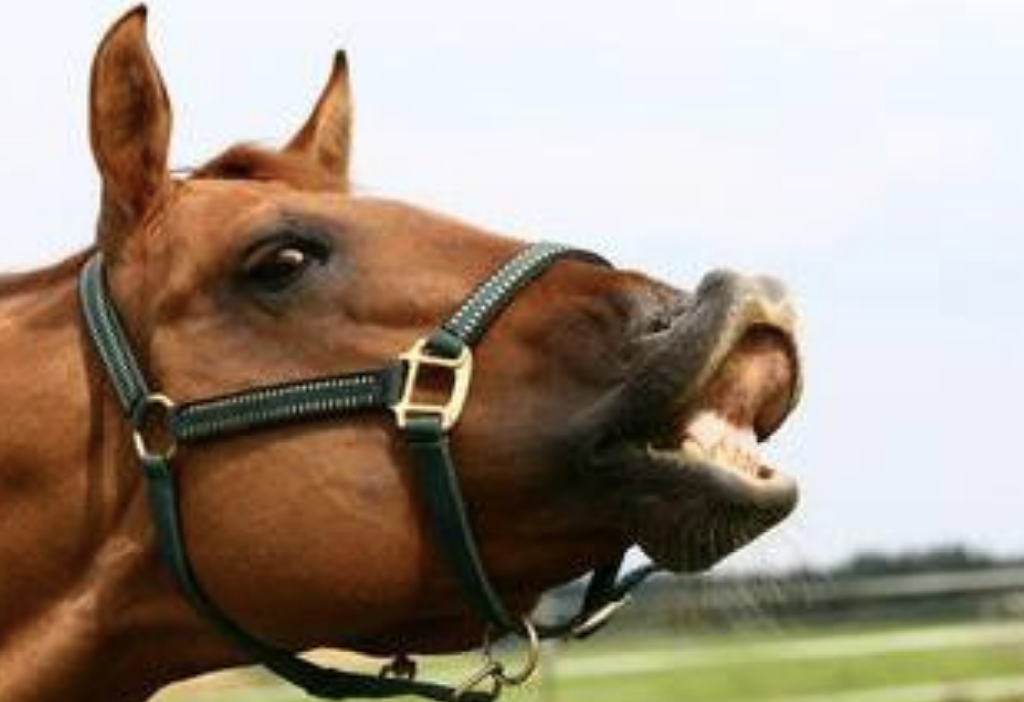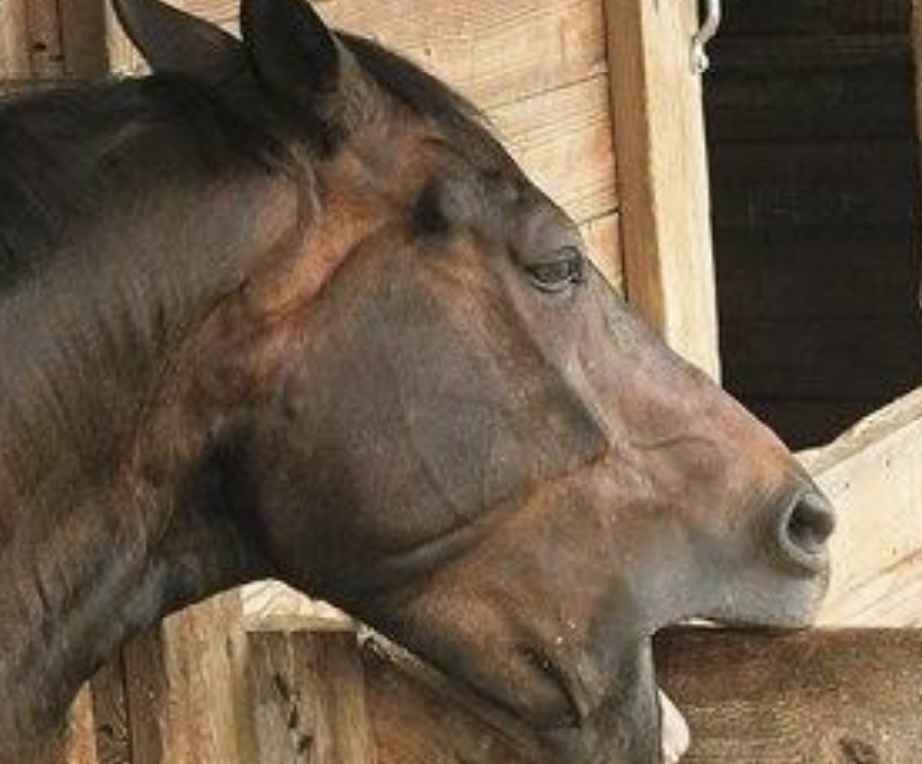Lecture 13 - Equine Behavior
1/29
There's no tags or description
Looks like no tags are added yet.
Name | Mastery | Learn | Test | Matching | Spaced |
|---|
No study sessions yet.
30 Terms
Horses
Which animals are strongly social herd animals, herbivores, typically show imitation between young and old, are seasonal breeders, use flight as the main defense, and are capable of strong pair-bond relationships?
Yes
Do horses have both binocular and monocular vision and shift between them? The eyes are on the side of the head, have a large eye with a large pupil, use small movement of the head, and have a blind spot immediately behind them.
180
How many degrees can horses rotate their ears to pinpoint sound? They can hear sounds from 14-25 hz and can detect sound, determine location, and provide info to identify or recognize the sound.
Yes
Are horses very sensitive to touch?
Tail
If what horse body part is high it is alert/excited, low it is exhausted/painful/fearful, high over back it is alarmed/playful, and swishing it is irritated?
Pawing
If a horse is using what leg position it is frustrated or painful?
Front
If a horse is lifting one which limb it is possibly threatening?
Back
If a horse is lifting one which limb it is showing a defensive threat?
Stamping
If a horse is doing what leg position it is showing a mild threat or protest, and could also be due to ectoparasites like flies?
Snapping
What facial expression, plus licking lips, is a submissive gesture from a foal to an older horse, or a transition between sympathetic-parasympathetic response?
Aggression
A horse with jaws open and teeth exposed is showing what display?
Alert
A horse with flared nostrils is excited or what?
Sclera
If the white part of which part of the eye is exposed, the horse is angry or fearful, except in Appaloosas?
Flehmen
What response in horses is in response to an intense or unusual smell, or due to a stallion detecting a mare in heat? The ears are forward, eyes are open, and upper lip is curled.

Neutral
A horse with ears loosely held up, swiveled forward, or to the side is showing what position?
Alert
Pricked ears mean the horse is what?
Tired
Drooped ears in a horse means it is painful or what?
Pinned
If a horse’s ears are what it is angry or aggressive?
Squeal
A scream or what sound denotes a warning from a stallion to a mare?
Nicker
What sound is quieter than a scream and is between a mare and foal or mare and stallion?
Whinny
Which sound is louder than a nicker and is used when searching for a herd mate?
Blowing
What sound is a whooshing sound used as an alarm?
Snort
What sound is used just to clear nasal passages?
Grooming
Mutual what behavior is a sign of friendship, strengthens bonds, and can be a sign of appeasement?
2-10
About how many years do stallions rule a herd?
Dangerous
Horses that are what are those that have been mismanaged, have no respect for people, require professional treatment plans, need sedation, need another horse as a block, and may require helmets and protective vests to handle?
Stereotypic
What type of behavior is repetitive, invariant, non-goal-oriented behaviors, and include about 13% of them? They are unable to perform natural behaviors, are kept in confinement, cannot be social, and are unable to move away from stress/fearful situations. They can also be seen in captive wild horses and zebras, but are not seen in wild or feral horses. It can also be called stable vices and is no longer seen as a boredom issue.
Cribbing
What behavior refers to the horse biting onto a solid structure and drawing in air, releasing endorphins? It can result in weight loss, excessive teeth wear, and colic, as well as well-developed ventral neck muscles. Muzzles and collars can be used to prevent it.

Less
Is wood-chewing a more or less serious vice as cribbing?
Walking
Stall weaving or what can be due to the horse being kept for long periods in a stall, such as shifting weight from one forelimb to another while bobbing the head? It can lead to weight loss and weakening of tendons, and can also indicate unhappiness.